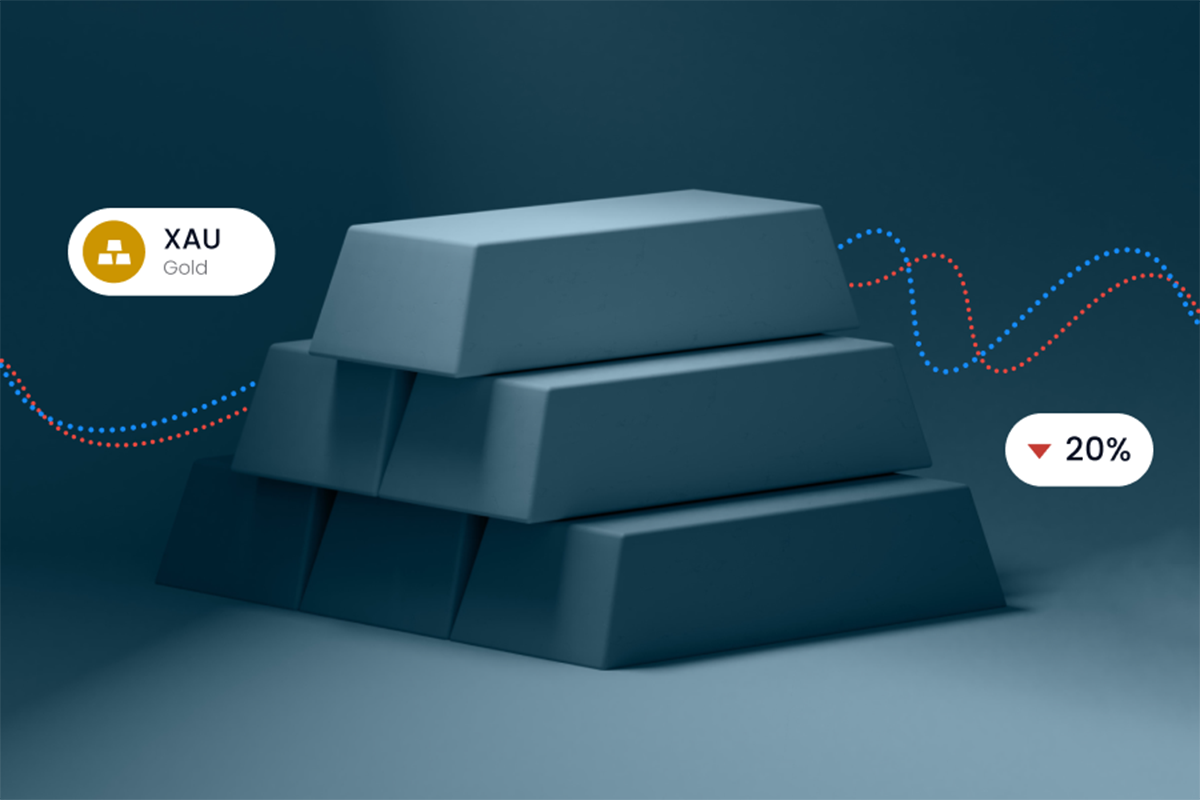
The spread—the difference between the bid and ask price—directly impacts your trading costs and, ultimately, your profitability. Whether you’re a novice or an experienced trader, securing the best spreads on gold can significantly influence your trading outcomes. This article explores why spreads matter, what influences them, and introduces some of the top indicators to help you make informed decisions when trading gold.
Why spreads matter in gold trading
Gold, a commodity known for its stability, acts as a hedge against inflation and economic uncertainty. However, for traders, the spread shapes the daily cost of doing business. Narrow spreads mean reduced transaction costs, which is vital when trading frequently or using strategies that rely on minimal price movement. As gold is traded globally around the clock, ensuring you access tight and stable spreads—regardless of market conditions—is a crucial aspect of staying competitive in the financial markets.
What influences gold spreads?
Several factors affect the spread on gold:
- Market volatility: During times of geopolitical tension or economic uncertainty, spreads may widen due to increased trading activity.
- Liquidity: High liquidity often results in narrower spreads as there are more participants in the market.
- Broker technology: Brokers with advanced technology, such as low-latency infrastructure, are often able to offer tighter spreads.
- Broker Commission Models: Some brokers offset tighter spreads with slightly higher commissions, while others may keep spreads narrow by integrating costs elsewhere.
For traders seeking to minimize costs, it is crucial to secure consistently tight spreads, but that is not the end of the story. It is equally important to comprehend the market through various indicators.
Top Indicators for Trading Gold
When trading gold, using reliable technical indicators can help you navigate market fluctuations and make informed decisions. These indicators are powerful tools that guide traders, helping them identify market trends, entry and exit points, and potential reversals. Here are some of the top indicators for trading gold effectively:
- Relative Strength Index (RSI)
RSI is one of the most commonly used momentum indicators in trading gold. RSI measures the speed and change of price movements, helping traders assess whether an asset is overbought or oversold. It ranges from 0 to 100, with readings above 70 indicating that gold may be overbought, and below 30 suggesting that it could be oversold.
For gold traders, RSI can signal potential trend reversals or continuation, particularly during volatile periods. By keeping an eye on RSI levels, traders can decide whether to hold, buy, or sell based on the momentum of gold prices.
- Moving Averages (MA)
Moving averages are important for identifying long-term trends in gold trading. By smoothing out price data, moving averages highlight the overall direction of the market. Traders commonly use the 50-day and 200-day moving averages to track gold price trends. When the shorter-term moving average crosses above the longer-term moving average (known as a “golden cross”), it’s often seen as a bullish signal. Conversely, when the shorter-term moving average crosses below the longer-term one (a “death cross”), it suggests a bearish outlook.
Moving averages are especially useful for traders looking to filter out short-term volatility and focus on the broader market trend.
- Bollinger Bands
Bollinger Bands are a popular technical indicator that uses moving averages and standard deviations to create bands around gold prices. These bands expand and contract based on volatility. When the price of gold touches or breaks out of these bands, it can signal overbought or oversold conditions.
Gold traders often use Bollinger Bands to predict price retracements or confirm market trends. During periods of high volatility, when the bands widen, traders may look for opportunities to trade breakouts or use them to assess risk levels.
- MACD (Moving Average Convergence Divergence)
MACD is a trend-following momentum indicator that shows the relationship between two moving averages (typically the 12-day and 26-day). It helps traders identify potential buy and sell signals, trend direction, and market momentum.
For gold trading, MACD is highly effective in pinpointing shifts in momentum. If the MACD line crosses above the signal line, it is often considered a bullish signal, while a crossover below the signal line suggests bearish momentum.
- Fibonacci Retracement
Fibonacci retracement levels are widely used in gold trading to identify potential support and resistance levels. These levels are based on the mathematical Fibonacci sequence and represent key points where a market might retrace or stall. Traders use Fibonacci retracement to find entry points during corrections or to predict the end of a pullback.
Since gold often exhibits strong trends, Fibonacci retracement levels help traders determine where a price pullback may reverse, allowing them to enter the market at more favorable points.
How to Maximize Your Gold Trading Strategy
Knowing which indicators to use is only part of the puzzle. Successful gold traders combine tight spreads with effective use of technical indicators to maximize their potential. Tight spreads reduce the overall cost of trading, allowing traders to take full advantage of market opportunities identified through these technical indicators.
In addition to using technical indicators, it’s essential to stay informed about market events and economic reports that can affect gold prices, such as central bank policies, inflation reports, and geopolitical developments. Combining fundamental analysis with technical indicators will give you a well-rounded approach to gold trading.
By leveraging tools like RSI, MACD, and Fibonacci retracement, while ensuring low trading costs through tight spreads, traders can enhance their profitability and reduce risks.
Follow us on Telegram, Twitter, and Facebook, or subscribe to our weekly newsletter to ensure you don’t miss out on any future updates. Send tips to editorial@techtrendsmedia.co.ke


